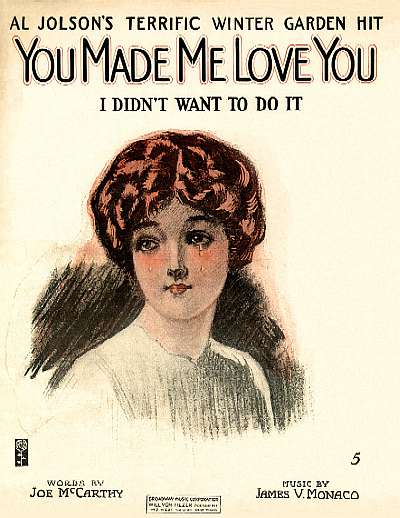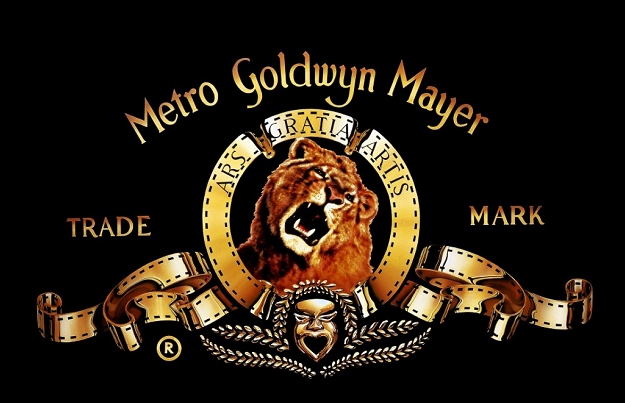



 Morris Rosenbaum (February 22, 1886 to June 1, 1953) | |
 Selected Covers (Hover to View) Selected Covers (Hover to View) | |
The identity of the artist (or artists) behind this mystery signature has not, to date, been identified with any level of certainty. However, researcher Keith Emmons has uncovered the origin of the famous Rosebud Symbol and the man who ran the studio. His name was Morris Rosenbaum (German for "rose bush") who formed the Rosenbaum Studios (R.S.) in Manhattan in the early 1910s. Further research showed him to be a Russian/Polish immigrant born to contractor and builder Jacob Rosenbaum and his wife Katherine Rosenbaum who had both married at age 16 in 1878. The growing family moved to the U.S. around 1887 or 1888, shortly after Morris was born. Starting as a building contractor, Jacob later became a real-estate broker in New York City. Morris was the second oldest of six surviving children out of eight born to the couple,

 including Minnie (4/1881), William (2/1884), George (6/1892), Henry (6/1894) and Abraham (3/1896). While Morris listed 1886 as his year of birth on his 1918 draft record, it may have been 1887 as per the 1900 census.
including Minnie (4/1881), William (2/1884), George (6/1892), Henry (6/1894) and Abraham (3/1896). While Morris listed 1886 as his year of birth on his 1918 draft record, it may have been 1887 as per the 1900 census.


Morris Rosenbaum is likely responsible for those cryptically signed covers with the rosebud/RS symbol which date back as far as 1906 when he was 19 or 20. The 1910 census showed him as a naturalized citizen working as an artist for a weekly art magazine and still living with his family. The same information shows on his 1918 draft registration in Manhattan. The 1916 New York City directory revealed a number of artists working for Rosenbaum Studios, giving some indication that it was a fairly busy place and a potential training ground for aspiring illustrators. They included Harold Guenther Breul from Rhode Island, Mortimer Flaum from New York City, Emil James Bistran from Poland, James Murray Mitchell from South Carolina, and Reinhold William Gundlach from Germany, all ranging in age from 19 to 38 years old.
The number of minor and major variations of the symbol alone suggest that it is likely the work of four or more artists, including Morris, which are represented over a nearly 27 year span of the studio's cover art production from West 45th Street, and later on 5th Avenue. As many as fourteen variations of the Rosebud symbol appeared with the initials R.S. on art that graced the covers of many pieces, suggesting the hand of multiple artists. Around 1913 Rosenbaum had employed the famed illustrator of the Oz books William Wallace Denslow, who was befriended by another Rosenbaum employee, Maurice Kursh. Denslow's tenure was short lived as was he, passing on in 1915.
For some time the studio was employed nearly exclusively by the Leo Feist publishing house (1912 to 1919) and later the Irving Berlin company (1919 to the late 1920s). Some covers showed just the rosebud and others the stem and rose in varying proportions. Other variations in the use of color palettes and line style on the drawings themselves further reinforce this contention. The advantage of utilizing a staffed studio was that fees were generally standardized, and the staff could be called upon to provide a wide variety of needs, such as full color drawings or simple border art for a photographic cover. As with the large number of E.T. Paull engravings from the Hoen Company, it is difficult to discern the work of individual artists' contributions, even if their names are known.
An alternate suggestion for the R.S. name was that of a female relative of the famed Starmer brothers, this one named Rose Starmer. It was speculated that someone with this name had entered the commercial art profession, but research into this possibility affirms that such a scenario is unlikely.
 |
The 1920 enumeration showed Morris still residing with his parents and brother Harry and Abe in Manhattan, with his trade listed as commercial artist. Jacob was still practicing real estate. A Manhattan directory of that same year also codifies the existence of the Rosenbaum Studio with Morris as the proprietor. A 1921 article in the New York Times concerning a corrupt officer accepting bribes to help recover stolen vehicles mentions Rosenbaum as an artist, one whose car had been recently stolen from in front of his studio on 45th Street. In 1924 Rosenbaum stored a substantial coup when he was commissioned to design the logo for a recently formed film company, MGM, adopting Samuel Goldwyn's own lion logo. His iconic art work, in which the company filmed as many as four lions over the years, has remained substantially unchanged since it first appeared on screen in 1925 in films like Ben Hur.
The 1925 New York State and 1930 Federal censuses showed Morris still living with his parents, listed as a commercial artist. Fresh cover output from Rosenbaum Studios appears to have all but ceased around 1930, but he still tried to keep the business alive. An advertisement in the New York papers in 1937 was soliciting customers for Rosenbaum Studios to create advertising art. The 1940 enumeration showed him living with his widowed father, still as an artist in his own studio. On his 1942 draft registration Morris noted only that he owned his own business, likely still in graphic arts, and listed his elderly father as his contact. By the time of the 1950 census Morris, showed as having never married, was living alone in Manhattan, and was still listed as a commercial advertising artist, albeit likely on a smaller scale than in prior decades. He would die three years later in New York City at age 67, but his works have long outlasted him in their viability and often clever renditions, both by his hand and that of his talented staff.
Thanks go to sheet music historian Keith Emmons who was able to locate the 1920 census record of Morris and his family listed under the name of Rosebaum.